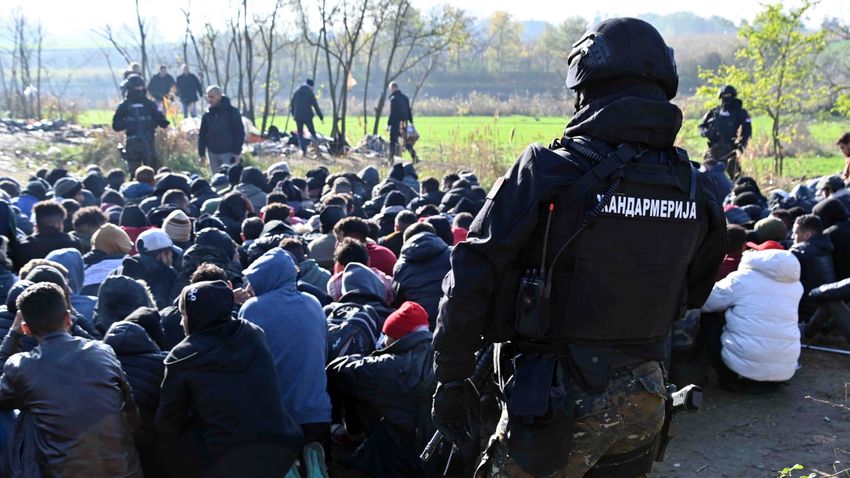So far this year, 109,000 illegal immigrants have been registered in Serbia, the head of the Serbian High Commission for Refugees, Natasa Stanislavljevic, confirmed on Tuesday following a report on Serbian public television (RTS).
Stanislavljevic revealed there are currently 4,835 migrants in reception centers across Serbia, while there could be another 1,000 migrants outside the centers. She added that she could not say how many migrants might be near the Serbian-Hungarian border because it is an “exit point” where a large contingent always resides.
Rados Djurovic, director of the Serbian Center for the Protection of Asylum Seekers, disagreed with the figures, claiming there are significantly more migrants than the official reports indicate. According to him, there are more than 2,500 near the Serbian-Hungarian border alone.
As Remix News previously reported, migrants again attacked each other with guns near the Serbian-Hungarian border in Horgos, near Röskje, last Thursday. CCTV footage showed a group of illegal immigrants walking down the street armed with guns who began to flee after shots were fired. Authorities removed approximately 1,000 migrants close to the border the following day. Reports from the ground suggest they have already started to trickle back into the settlement, but the police presence has prevented them from entering the center. Those who do get in are being searched by patrols, and so far, no weapons have been found.
According to Djurovic, organized crime is responsible for the events in Horgos, and the shooting was certainly not between groups of migrants but between gangs of people smugglers. “Such shootings are motivated by the fight for territory because there is a lot of money in human trafficking,” he added.
In July, there were two major operations against migrants in Serbia’s Voivodina district, neighboring Hungary. At the beginning of the month, two groups of migrants clashed in the Kelebija forest, resulting in multiple fatalities. On that occasion, 85 illegal immigrants were arrested, and shortly afterwards, a further 120 migrants were arrested by police in Horgos. However, as Serbian authorities do not deport those who are caught, but merely transport them back from the northern border to the southern border, migrants often start again and reach the Hungarian border a few days later.
At the height of the migration crisis in 2015, around 1 million illegal immigrants crossed the so-called Western Balkan route, of which Serbia is a part. At that time, they mainly came from Syria.
According to the Serbian High Commission for Refugees, most of these migrants (about 40 percent) are now coming to Serbia from Afghanistan, but there are still many illegal immigrants from Syria, Morocco, and Pakistan.






